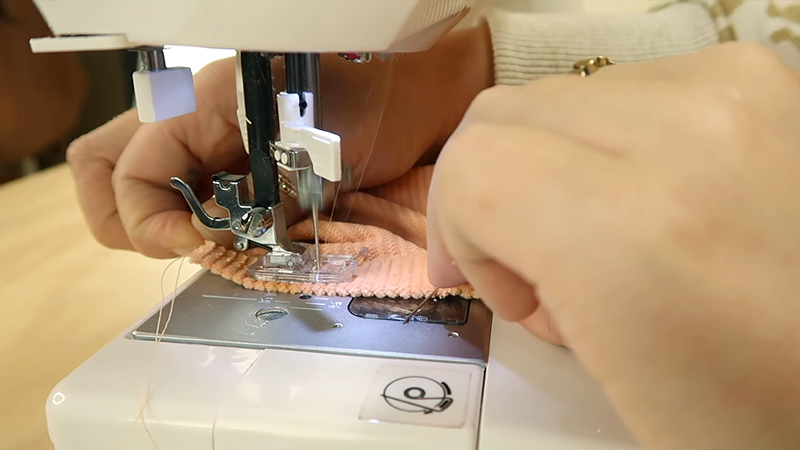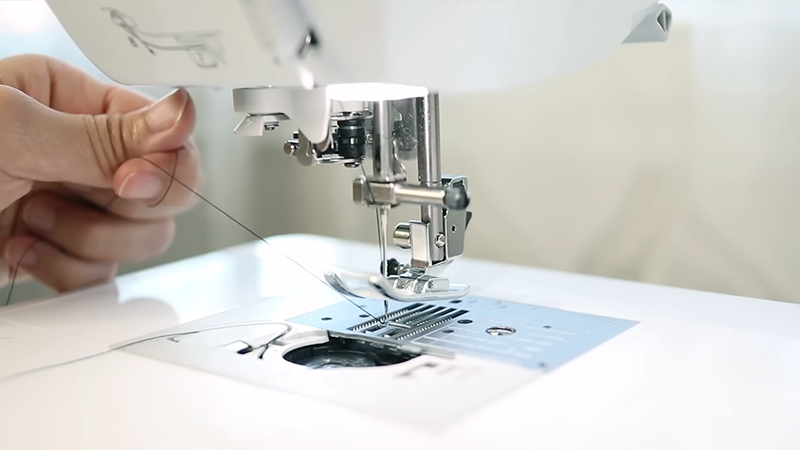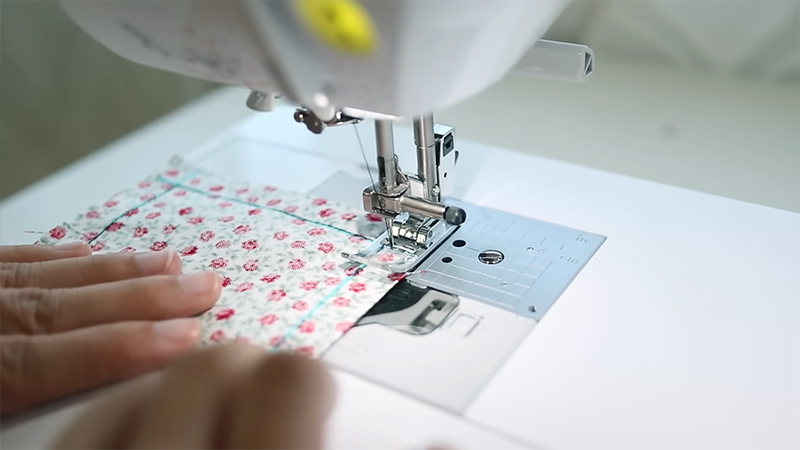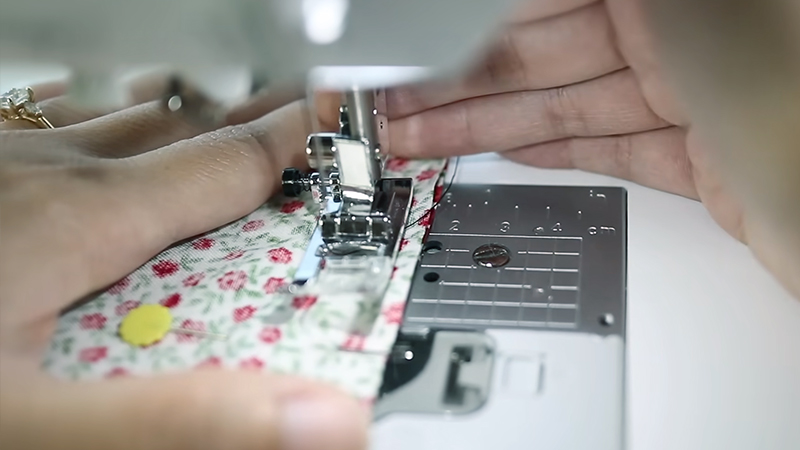Embarking on the path of sewing can be both exciting and slightly intimidating for beginners. The notion of transforming fabrics into functional, artistic creations carries a certain allure.
However, one might wonder, is sewing hard to learn? This question often lingers in the minds of those taking their first steps into this craft.
While sewing involves acquiring a set of skills, it’s important to note that with the right guidance, practice, and a sprinkle of patience, it becomes an accessible and gratifying endeavor.
This exploration aims to demystify the learning process, shedding light on the challenges, resources, and eventual mastery that awaits aspiring sewists.

Is Sewing Hard to Learn?
Sewing is a versatile and valuable skill that has been passed down through generations. While it may seem daunting to beginners, it is not inherently difficult to learn.
Like any craft or skill, sewing requires practice, patience, and a willingness to learn from mistakes.
Let’s explore some aspects of sewing and why it may not be as hard to learn as it initially appears.
Basic Sewing Techniques
Mastering the basic sewing techniques is akin to building a solid foundation in any skill.
It involves understanding the anatomy of a sewing needle, how to properly thread it, and becoming proficient in essential stitches like the straight stitch, back stitch, and whipstitch.
These fundamental skills are crucial for any sewing project, from repairing a torn garment to creating intricate designs.
Abundance of Learning Resources
The digital era has ushered in an unparalleled wealth of learning materials for sewing enthusiasts. Blogs, forums, and social media platforms are teeming with tutorials and demonstrations.
YouTube, in particular, has become a treasure trove of video guides covering everything from basic techniques to advanced projects.
Moreover, online courses and workshops are available for those seeking structured, in-depth learning experiences.
Start with Simple Projects
Choosing uncomplicated projects initially allows beginners to focus on perfecting basic skills.
For instance, sewing a pillowcase involves relatively straightforward steps, but it incorporates crucial techniques like measuring, cutting, and stitching. As confidence grows, you can gradually tackle more complex projects.
Pattern Reading
Reading sewing patterns may seem like deciphering a complex code at first. However, as you become accustomed to the terminology and symbols, it becomes a more intuitive process.
Patterns provide a step-by-step roadmap for creating a particular item, guiding you through each stage with detailed instructions.
Mistakes Are Part of the Process
Embracing mistakes as learning opportunities is a crucial mindset in sewing. A misplaced stitch or an uneven hem is not a sign of failure, but rather a chance to refine your skills.
Each error hones your problem-solving abilities and deepens your understanding of the craft.
Precision and Attention to Detail
Precision is an essential aspect of sewing. Accurate measurements, careful cutting, and meticulous stitching are the cornerstones of a well-crafted project.
With practice, your eye for detail sharpens, and your hands become more adept at executing precise movements.
Creativity and Customization
One of the most rewarding aspects of sewing is the ability to bring your unique vision to life.
As you progress beyond basic projects, you’ll find the freedom to customize patterns, experiment with different fabrics, and even design your creations from scratch. This creative expression is what sets handmade items apart.
Sense of Achievement
Completing a sewing project offers a tangible sense of accomplishment. Witnessing a pile of fabric transform into a functional, aesthetically pleasing item instills a profound satisfaction.
This sense of achievement is a powerful motivator that propels you to tackle more ambitious projects.
Community and Support
Engaging with the sewing community provides a source of inspiration, camaraderie, and valuable insights.
Whether through local sewing clubs, online forums, or social media groups, you’ll find a network of like-minded individuals eager to share their experiences, offer advice, and celebrate your successes.
Practice Makes Perfect
Like any skill, sewing improves with consistent practice. Repetition hones your muscle memory, refines your technique, and fosters confidence in your abilities.
It’s important to approach sewing with a patient mindset, understanding that proficiency comes with time and dedication.
How Do You Learn to Sew?

Learning to sew involves several steps and a gradual progression from basic skills to more advanced techniques.
Here’s a step-by-step guide on how to learn sewing:
Gather Essential Supplies:
- Sewing Machine (if you’re using one)
- Hand sewing needles
- Fabric
- Thread
- Scissors
- Pins
- Measuring tape
- Seam ripper (for fixing mistakes)
Understand Sewing Basics
Before diving into projects, familiarize yourself with the essential sewing basics:
- Threading the Needle: Learn how to thread a sewing needle, both for hand sewing and machine sewing.
- Basic Stitches: Practice basic hand stitches like the running stitch, backstitch, and whipstitch. For machine sewing, understand how to create a straight stitch.
- Seam Allowance: Know what a seam allowance is and how to measure and mark it on your fabric.
Start with Simple Projects
Choose beginner-friendly sewing projects to practice your skills.
Here are some ideas:
- Sewing a pillowcase
- Making a simple tote bag
- Hemming pants or skirts
- Repairing a torn garment
Read and Follow Patterns
As you gain confidence, try working with sewing patterns.
Patterns provide step-by-step instructions for creating specific items. Start with easy-to-follow patterns and gradually progress to more complex ones.
Learn About Fabrics
Understanding different types of fabrics and their properties is crucial.
Some fabrics are easier to work with than others, so knowing which one to choose for your project is essential. Learn about fabric grain, stretch, and how to handle various materials.
Practice, Practice, Practice
Improvement in sewing comes with practice. Dedicate time regularly to work on sewing projects, even if they are small. Repetition will help you develop muscle memory and refine your skills.
Watch Tutorials and Take Classes
There are countless sewing tutorials available online, particularly on platforms like YouTube. These videos often provide visual guidance and tips for specific projects and techniques.
When you prefer a structured learning experience, consider taking sewing classes in your local community or online.
Learn from Mistakes
Don’t be discouraged by mistakes. They are an essential part of the learning process.
Analyze what went wrong, how you can avoid similar mistakes in the future, and keep moving forward.
Experiment and Customize
As you become more proficient, experiment with customizing patterns and adding your creative touches to projects. This is where sewing becomes a truly enjoyable and personal endeavor.
Join Sewing Communities
Engage with the sewing community, both online and offline. Participate in sewing forums, follow sewing blogs and social media accounts, and join local sewing groups or clubs. These communities can provide valuable advice, inspiration, and support.
Keep Learning and Growing
Sewing is a lifelong learning journey. There are always new techniques to explore, projects to tackle, and skills to refine. Continuously seek opportunities to expand your sewing knowledge and expertise.
Overcoming Challenges in Learning Sewing

Learning to sew can be an incredibly rewarding endeavor, but like any skill, it comes with its fair share of challenges.
Here are some common challenges you might encounter when learning to sew and tips on how to overcome them:
Understanding Sewing Jargon
- Challenge: The world of sewing has its own terminology, and understanding sewing patterns and instructions can be confusing for beginners.
- Solution: Invest time in studying sewing glossaries or reference guides that explain common sewing terms. Don’t hesitate to ask for clarification from experienced sewists or instructors when you encounter unfamiliar terms.
Tension and Stitch Quality
- Challenge: Achieving the right tension on your sewing machine or creating even hand stitches can be tricky.
- Solution: Practice threading and adjusting your sewing machine until you achieve the desired tension. For hand sewing, practice, and patience are key. Over time, your stitches will become neater and more consistent.
Pattern Reading
- Challenge: Sewing patterns can be complex and intimidating for beginners.
- Solution: Start with simple patterns and gradually work your way up to more intricate designs. Carefully read through the pattern instructions before starting and follow each step methodically..
Cutting and Measuring Accurately
- Challenge: Measuring and cutting fabric precisely can be challenging, and mistakes in these areas can affect the overall outcome of your project.
- Solution: Invest in quality measuring tools such as a rotary cutter, clear acrylic ruler, and a self-healing cutting mat. Take your time when measuring and cutting, and always double-check your measurements before making any cuts.
Sewing Straight Lines
- Challenge: Sewing a straight line, especially for beginners using a sewing machine, can be difficult.
- Solution: Use guides like marked lines on your sewing machine’s throat plate or painter’s tape to help you sew straight lines. Practice sewing straight seams on scrap fabric until you feel confident.
Managing Fabric
- Challenge: Different fabrics have varying textures and behaviors, making them sometimes challenging to work with.
- Solution: Familiarize yourself with different fabric types and their characteristics. Practice sewing with a variety of fabrics to understand how they handle and how to adjust your techniques accordingly.
Time and Patience
- Challenge: Sewing can be time-consuming, and projects may take longer than expected.
- Solution: Set realistic expectations and allow yourself the time needed to complete a project. Avoid rushing, as this can lead to mistakes. Remember that the journey of sewing is as important as the finished product.
Perfectionism
- Challenge: Striving for perfection in every project can lead to frustration and disappointment.
- Solution: Accept that imperfections are part of the learning process. Instead of aiming for perfection, focus on progress and improvement. Over time, your skills will naturally become more refined.
Troubleshooting Mistakes
- Challenge: When you make a mistake, it can be challenging to identify the source and rectify it.
- Solution: Take a step back and carefully assess what went wrong. Use resources like sewing books, online tutorials, or experienced sewists to troubleshoot and find solutions to common sewing problems.
Staying Motivated
- Challenge: Maintaining motivation can be difficult, especially when you encounter frustrating challenges.
- Solution: Set achievable goals and break larger projects into smaller, manageable tasks. Celebrate your successes, no matter how small, and remind yourself of the satisfaction that comes with completing a sewing project.
Approachable and Enjoyable Methods for Effortless Sewing Mastery

Learning to sew can be a delightful and rewarding journey when you embrace accessible and enjoyable techniques.
Whether you’re a complete beginner or looking to refine your sewing skills, these methods will help you make the most of your sewing experience.
Here are:
Relaxing Repetition
Engage in the calming and therapeutic rhythm of sewing. The act of stitching, whether by hand or machine, fosters muscle memory and refines your technique.
As you repeat stitches, you’ll find a comforting flow in the process, making learning an enjoyable, almost meditative experience.
Innovative Crafting Apps
Explore the wide array of user-friendly apps designed for crafters. These apps offer interactive tutorials, project ideas, and virtual communities where you can connect with fellow sewing enthusiasts.
From step-by-step instructions to design inspiration, these digital tools provide a dynamic and engaging way to learn and create.
Fashion Forward Podcasts
Immerse yourself in the world of sewing through insightful podcasts. These audio programs delve into sewing trends, and techniques, and feature interviews with experienced sewists.
By tuning in, you not only absorb valuable knowledge but also infuse an enjoyable auditory element into your learning journey.
Themed Sewing Challenges
Infuse excitement into your sewing practice by setting themed challenges. Whether it’s reviving vintage styles or embracing modern minimalism, themed projects inspire creativity and encourage you to explore new techniques.
These challenges add a playful aspect to your sewing, making it an engaging and enjoyable pursuit.
Local Workshop Excursions
Step into the vibrant world of local crafting workshops. These hands-on sessions, often hosted by community centers or crafting studios, provide valuable in-person instruction.
Learning alongside others in a social, interactive setting not only enhances your skills but also creates a sense of camaraderie and enjoyment.
Sewist Social Media Groups
Connect with the global sewing community through platforms like Instagram and Facebook. Joining sewing groups allows you to share your progress, seek advice, and draw inspiration from fellow sewingists worldwide.
The sense of belonging to a creative community enhances the learning experience, making it both enjoyable and enriching.
Embroidery for Mindfulness
Integrate the art of embroidery into your sewing repertoire. The deliberate, rhythmic nature of embroidery promotes mindfulness and focus.
Engaging in this meditative practice not only refines your stitching skills but also transforms learning into a calming and pleasurable pursuit.
Expressive Fabric Selections
Embrace the freedom of choosing diverse fabrics for your projects. Each material has its unique texture, drape, and personality.
By experimenting with different fabrics, you’ll not only learn how to handle them effectively but also discover how they can elevate your creations, turning each project into a personalized and enjoyable masterpiece.
FAQs
Is it necessary to invest in an expensive sewing machine to start learning?
No, it’s not necessary. Beginners can start with a basic, budget-friendly sewing machine.
Can I learn to sew without a sewing machine?
Absolutely. Many beginners start with hand sewing, which can be a valuable foundation
Are there specific fabrics that are easier for beginners to work with?
Yes, fabrics like cotton, linen, and stable knit fabrics are generally considered easier for beginners.
How long does it take to become proficient in sewing?
The timeline varies depending on individual learning pace and practice frequency. With consistent practice, beginners can acquire basic sewing skills in a few weeks to a few months.
Do I need to take formal sewing classes to become a skilled sewer?
While formal classes can be beneficial, they are not a requirement. Many self-taught sewists have become highly skilled through online tutorials, sewing books, and practice.
To Recap
While sewing may appear daunting initially, it is not inherently difficult to learn. With access to abundant learning resources, patience, and practice, beginners can grasp the basics and progress to more advanced techniques.
Starting with simple projects, understanding patterns, and familiarizing oneself with fabrics are essential steps.
Embracing mistakes as part of the learning process is crucial, and joining sewing communities can provide valuable support. Remember, practice and perseverance are key.
As skills develop, sewing transforms from a challenge into a rewarding and creative outlet. So, embark on this journey with confidence, knowing that with dedication, you can master the art of sewing.
Leave a Reply